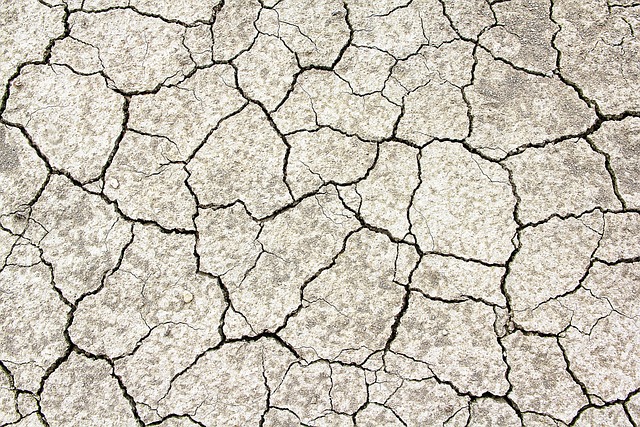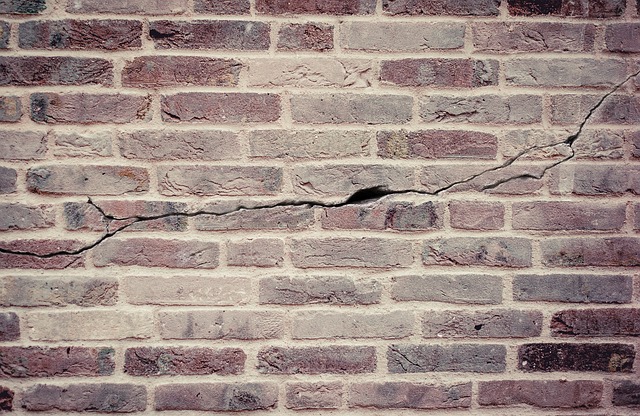Concrete cracks require immediate attention as they signal structural issues and can lead to further damage if untreated. Effective crack repair involves understanding causes like settlement or environmental factors, assessing crack types and severities, selecting appropriate materials (e.g., epoxy for minor cracks, advanced composites for large ones), thorough cleaning and preparation, correct patching compound choice, and regular maintenance including inspection, cleaning, sealing, and drainage control. Professional services are recommended for severe cracks to ensure lasting repairs and concrete structure stability.
Concrete cracks can range from minor aesthetics to structural concerns. Understanding their causes and types is crucial for effective crack repair. This guide delves into comprehensive concrete patching, addressing assessment, materials, step-by-step processes, common mistakes, maintenance tips, and professional intervention for severe cases. By employing the right techniques and materials, you can achieve long-lasting results, ensuring your concrete surfaces remain robust and aesthetically pleasing. Implement these practices to effectively manage and repair cracks before they become significant structural issues.
Understanding Concrete Cracks: Causes and Types

Concrete cracks can be both functional and aesthetic issues, often indicating underlying problems within the structure. Understanding the causes and types of concrete cracks is crucial for effective crack repair. These defects can arise from various factors, including settlement, environmental conditions, structural stress, or improper construction techniques.
There are several types of concrete cracks: hairline cracks, which are thin and shallow; diagonal cracks, often formed due to shrinking or expansion; vertical cracks, usually resulting from uneven settling; and horizontal cracks, commonly seen in structures experiencing significant stress. Prompt crack repair is essential to prevent further damage, ensuring the longevity and stability of concrete surfaces.
Assess the Extent of Damage: Identifying Repair Needs

Before beginning any crack repair or concrete patching, it’s crucial to assess the extent of damage. This involves thoroughly inspecting the affected area to understand the severity and type of cracks present. Surface-level cracks might be merely cosmetic, while deeper, wider cracks could indicate structural issues that require immediate attention. Cracks can vary in appearance—from hairline fractures to large, diagonal cracks—and each may necessitate a different repair approach.
Identifying specific repair needs is the first step in ensuring long-lasting results. Smaller, shallow cracks might only need filling and sealing, while larger, more extensive damage could require partial replacement or advanced patching techniques. Regular maintenance checks can help catch these issues early on, preventing small cracks from becoming costly structural problems that compromise the integrity of your concrete surface.
Materials and Methods for Effective Crack Repair

When it comes to concrete patching and crack repair, the choice of materials and methods is paramount. Effective crack repair begins with understanding the extent of damage. For small cracks, a simple application of epoxy or polyurethane injectants can strengthen and seal them, preventing further deterioration. These materials are versatile, easy to use, and provide a durable solution for both vertical and horizontal cracks.
For larger cracks or those showing signs of structural compromise, more extensive repair techniques may be required. This could involve removing the damaged concrete, using formwork to hold the patch in place while it sets, and then finishing with a smooth surface to match the surrounding concrete. Advanced materials like fiber-reinforced composites can also be employed for enhanced strength and longevity, making them ideal for high-traffic areas or structures under constant stress.
Step-by-Step Guide to Concrete Patching

Concrete patching and crack repair is a straightforward process that can significantly enhance the durability and aesthetics of your concrete surfaces. Here’s a step-by-step guide to help you get started. First, identify and assess the cracks. Small, hairline fractures can often be addressed with simple methods like filling and sealing, while larger cracks might require more intensive repair techniques.
Next, gather your tools and materials: a concrete patch or mortar, a trowel for application, protective gear including gloves and eye wear, and a water source. Prepare the area by cleaning away any loose debris or grime using a wire brush or high-pressure washer. Ensure the cracked surface is dry before proceeding to prevent improper bonding of the patch material. Apply the concrete patch or mortar directly onto the crack using the trowel, filling it completely and smoothing the surface for an even finish. Allow the patch to cure according to the manufacturer’s instructions before applying a sealant for added protection against moisture penetration and further damage.
Common Mistakes to Avoid During Crack Repair

When undertaking crack repair, it’s crucial to avoid common mistakes that can compromise the longevity of your concrete patching efforts. One of the most frequent blunders is failing to properly clean and prepare the cracked area before applying a patch. This includes not removing loose debris, dust, or existing sealers, as these impurities can hinder adhesion and cause future damage. Always use a pressure washer or wire brush to thoroughly cleanse the crack and ensure a clean, dry surface.
Another mistake is using the wrong type of patching compound for your concrete. Different cracks require specific repair materials. For wide or structural cracks, a flexible polymeric cement is recommended due to its ability to expand and contract with the concrete. For smaller, non-structural cracks, a traditional concrete patch may suffice. Using an inappropriate compound can lead to poor bonding, heaving, or shifting of the repaired area over time.
Long-Lasting Results: Tips for Maintaining Repaired Concrete

After successfully repairing concrete cracks, achieving long-lasting results requires proper maintenance. Regular inspection is key; regularly check for new cracks or signs of damage around the repaired areas. Promptly addressing any issues ensures the longevity of your crack repair work.
Keep the repaired concrete clean and free from debris to prevent dirt or grime from sealing into the gaps. Use a mild detergent or pressure washing for cleaning, avoiding harsh chemicals that could damage the surface. Moisture control is also vital; ensure proper drainage to prevent water accumulation, as it can exacerbate cracking. Regular sealing every one to two years helps protect against weathering and environmental factors, maintaining the repair’s integrity for extended periods.
When to Seek Professional Assistance for Severe Cracks

If cracks in your concrete surfaces are severe, wide, or deep, it’s time to consider professional crack repair. While small cracks might be merely aesthetic concerns, larger ones can compromise the structural integrity of your concrete. They can also lead to more serious damage as water and contaminants penetrate the weakened surface, causing further deterioration.
Professional crack repair specialists have the expertise and equipment to assess and address severe cracks effectively. They employ advanced techniques and materials that ensure durable repairs, preventing the spread of cracks and prolonging the lifespan of your concrete structures.
